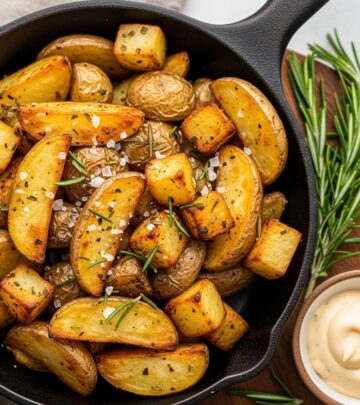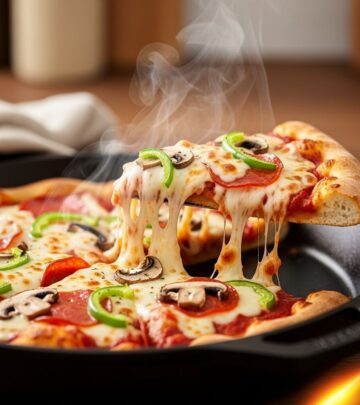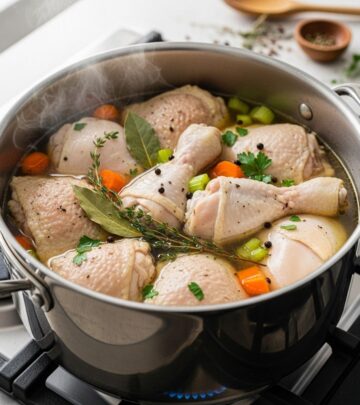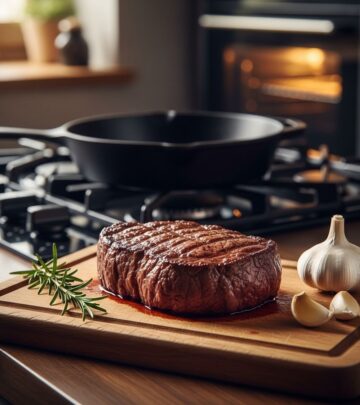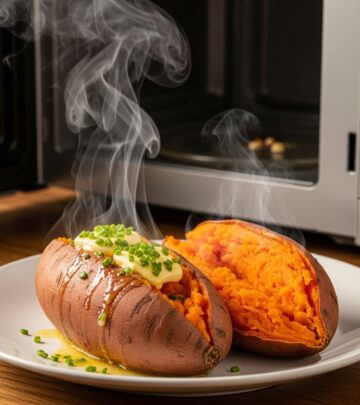How to Safely Reuse Frying Oil: A Complete Guide for Home Cooks
Extend the life of your cooking oil without sacrificing taste or safety.
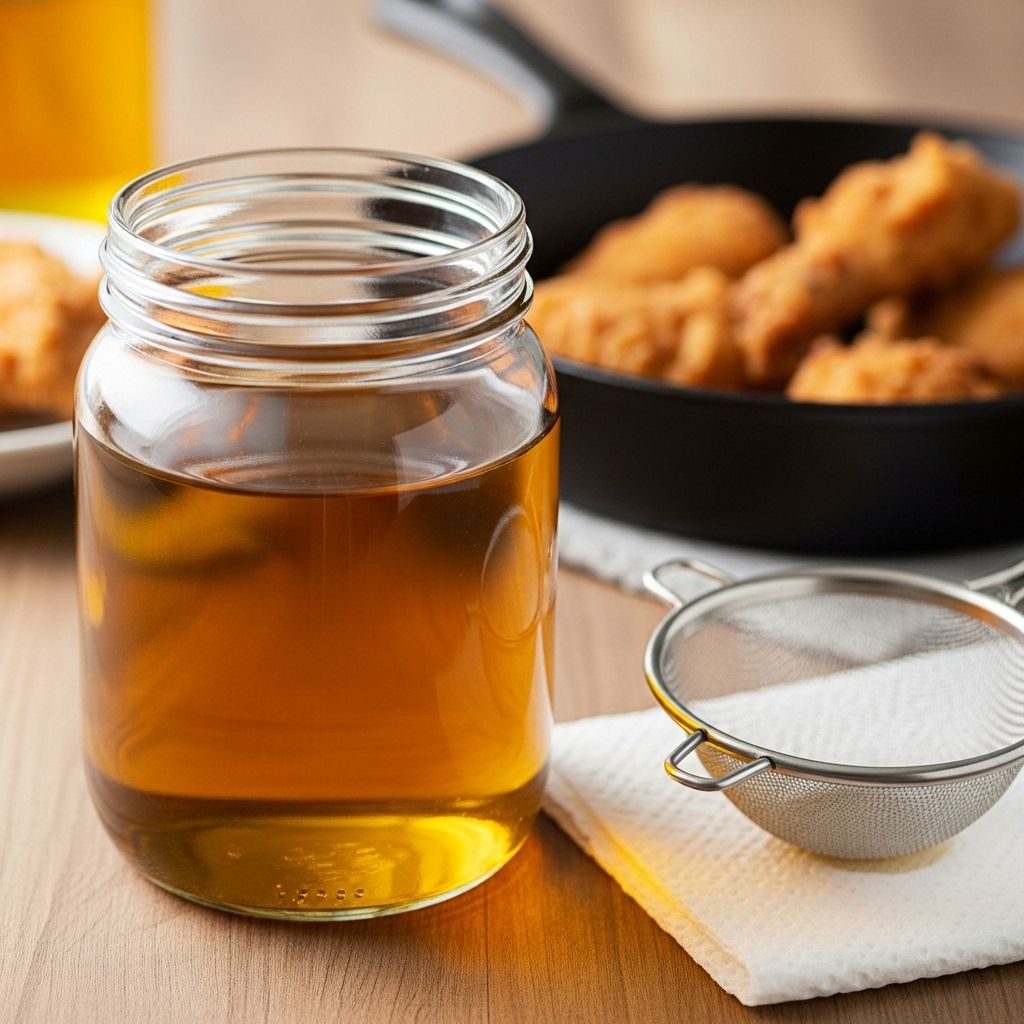
How to Safely Reuse Frying Oil: Essential Tips and Guidelines
Deep frying delivers the signature crunch and golden color we crave in many comfort foods, but it often leaves home cooks with a dilemma: What do you do with the leftover oil in your skillet or fryer? Dumping several cups of perfectly usable oil after just one batch can feel wasteful — both environmentally and economically. Thankfully, with proper storage and cleaning methods, you can reuse frying oil multiple times and still achieve delicious, crisp results. This comprehensive guide breaks down everything you need to know about safely reusing frying oil at home.
Why Reuse Frying Oil?
Frying oil is often the most expensive part of deep frying. Whether you’re using neutral vegetable oil, peanut oil, or even refined coconut oil, tossing it after just one use doesn’t make sense. Besides reducing kitchen costs, reusing oil minimizes environmental impact, as disposal of large quantities of oil is a challenge. However, to preserve food flavor and maintain safety, some key steps must be followed each time you reuse oil.
Understanding Oil Degradation
Oil doesn’t last forever. With each use, oil is exposed to heat, air, moisture, and food bits, all of which gradually degrade its quality and flavor. Over time, oil breaks down into compounds that can cause off-flavors, a dark appearance, and smoke point reduction. Reusing oil wisely means learning to identify signs of spoilage and taking steps to prolong its life.
- High heat breaks down fat molecules: Repeated heating alters the chemical structure and stability of the oil.
- Moisture from food accelerates rancidity: Water and food particles in oil encourage breakdown and bacteria growth.
- Impurities build up over time: Battered foods, breading, and small bits can carbonize and affect future batches.
Which Oils Are Best for Reusing?
Not all oils survive multiple rounds of deep frying equally. Neutral, refined oils with high smoke points tend to be best for reusing. Here are good options:
- Peanut Oil: Excellent durability and flavor retention.
- Canola Oil: Neutral taste; good for multiple uses.
- Sunflower Oil: Mild flavor, higher smoke point.
- Vegetable Oil: Widely available, cost-effective, and stable.
- Refined Coconut Oil: High smoke point, less flavor transfer.
Oils with bold flavors, like extra virgin olive oil or unrefined sesame oil, are less suited for reuse, as they degrade faster and impart strong flavors to food.
How Many Times Can You Reuse Frying Oil?
- Home Cook Guide: For simple, clean frying (potatoes, doughnuts), oil can be reused up to four or five times.
- Battered or Breaded Foods: Oil may pick up particles and flavors more quickly; limit reuse to two or three times.
- Fish and Strongly Flavored Ingredients: Oil can absorb odors; best used only once or twice for delicate recipes.
Always check oil after each use for taste, color, and clarity. If in doubt, throw it out!
How to Clean and Store Used Frying Oil
Preserving quality between frying sessions requires both cleaning and proper storage:
- Cool the Oil:
- Let oil cool to room temperature after frying.
- Never handle hot oil — risk of burns!
- Strain Out Food Particles:
- Pour oil through a fine-mesh strainer, cheesecloth, or coffee filter to remove crumbs and bits.
- This prevents burnt flavors and contamination in future batches.
- Choose the Right Storage Container:
- Use clean glass jars or food-grade plastic containers with tight lids.
- Never store oil in iron, copper, or unlined metal containers, as these react with the oil.
- Store in a Cool, Dark Place:
- Keep oil away from direct sunlight and heat sources.
- Refrigeration is not strictly necessary, but cool storage extends shelf life.
- Label the Container:
- Write the date of first use and the type of foods fried.
- This helps track freshness and potential flavor transfer.
Cleaning Used Oil: Step-by-Step
| Step | Description |
|---|---|
| 1. Cool Completely | Allow oil to reach room temperature before handling. |
| 2. Strain Thoroughly | Strain multiple times through mesh, cloth, or filter to remove debris. |
| 3. Optional: Use Potato Slices | Heat oil with potato slices to help absorb any off-flavors, then remove slices. |
| 4. Store Properly | Poor strained oil into a labeled, airtight container away from light and heat. |
Flavor Transfer: What to Watch For
Fried food aromas and flavors are irresistible, but strong seasonings, batter spices, or fishy odors can linger in reused oil. Tips to minimize unwanted flavor transfer:
- Don’t reuse oil used for frying fish or seafood for sweets or neutral foods.
- Batch fry similar types of food together to avoid cross-flavoring.
- If oil takes on an unwanted odor, discard or reserve for savory use only.
When Is Oil No Longer Safe to Use?
Knowing when frying oil has reached its limit is crucial for both flavor and food safety. Watch out for any of these warning signs:
- Foaming or excessive bubbling when heating, which can signal breakdown or contamination.
- Cloudiness that doesn’t disappear after straining.
- Thick, sticky texture or oil that pours sluggishly, indicating polymerization.
- Bitterness, sour taste, or unpleasant aroma, even after frying neutral foods.
- Dark color that can no longer be reversed.
Disposing of Used Cooking Oil Properly
When oil is truly spent and can’t be reused any further, dispose of it responsibly:
- Never pour oil down the sink; it can clog pipes and pollute water.
- Pour used oil into a sealable container and dispose of it in regular trash or at a local recycling center.
- Some communities offer collection for biofuel conversion or composting.
FAQs About Reusing Frying Oil
Can I reuse frying oil after cooking battered foods?
Battered and breaded foods introduce more particles into the oil, which can affect taste and clarity. You can reuse oil after frying these foods, but wrap up after two or three batches and always strain thoroughly.
Is it safe to mix fresh oil into reused oil?
If the old oil is still good, you can mix in fresh oil to extend its usability. This refreshes depleted compounds and balances flavor — but never mix fresh oil with rancid or foul-smelling oil.
Should I refrigerate used frying oil?
Refrigeration will cast off light and slow down rancidity. While not strictly necessary for short-term storage, it helps prolong shelf life, especially in warm climates.
How do I know if oil is too old?
If the oil smells bitter, tastes strange, foams, or darkens excessively, it’s time to discard. When in doubt, throw it out!
Tips and Tricks: Maximizing Oil Longevity
- Fry at proper temperatures: Too hot accelerates oil breakdown; too cool creates greasy food.
- Avoid overcrowding: Maintain consistent oil temperature by not overloading the fryer or pan.
- Skim out food bits between batches to keep oil clean.
- Add a slice of potato to neutralize off-flavors (then remove and discard).
- Label and date containers to keep track of usage cycles.
Summary Table: Dos & Don’ts of Reusing Frying Oil
| Do | Don’t |
|---|---|
| Cool and strain oil after each use | Let oil sit with food bits overnight |
| Store in airtight, odor-free containers | Expose oil to sunlight or heat |
| Watch for signs of spoilage | Reuse oil with fishy or burnt odors |
| Dispose responsibly when oil is spent | Pour oil into sinks or toilets |
Conclusion: Safe, Delicious, and Responsible Frying
Reusing frying oil in your home kitchen is simple, economical, and sustainable. With careful cleaning, proper storage, and an awareness of oil’s breakdown and flavor transfer, you can enjoy multiple batches of crisp fried food while minimizing waste and cost. Always trust your senses — when oil seems off, it’s best to start fresh. Fry smart and savor the crunch!
References
Read full bio of medha deb







